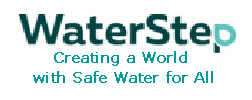|
|

|
  

10/19/2025
WT Staff
 Got water questions? Got water questions? Give us a call at 877-52-WATER (877-529-2837), or email us at info@wtny.us
Sunday, October 19, 2025 302 pm EDT
Alliance for the Great Lakes reports on the deepening risk to groundwater and public health
"Every county and watershed in the state is experiencing nitrate contamination of surface and
groundwater at levels that impact public health."
A report released last month by Alliance for the Great Lakes and Clean Wisconsin documents the regrettable state of nitrate contamination of groundwater aquifers, the primary drinking water supply for many thousands of households. The joint study concluded with key statements thought to apply not only to Wisconsin, but all watersheds and aquifers in agricultural zones.
Key take-aways:
- Nitrate contamination of Wisconsin’s surface and groundwater is primarily caused by
widespread use of nitrogen fertilizer and manure application.
- More than 90% of nitrate pollution is linked to agriculture. It is estimated
that over 16 million pounds of nitrogen was applied beyond crop needs in 2022.
- Every county and watershed in the state is experiencing nitrate contamination of surface and groundwater at levels that impact public health.
- Health risks include a variety of cancers, pregnancy complications, and blue baby syndrome.
- Nitrate contamination contributes to
eutrophication and toxicity of
harmful algal blooms and threatens
aquatic life.
Surface water sources are also feeling the pain of nutrient contamination. The Maumee River watershed area of northwest Ohio has been the focus of efforts to curb excess nutrient loading of Lake Erie, the public water supply for more than twelve million people in the USA and Canada. US Environmental Protection Agency (EPA) approved Ohio EPA's plans to monitor and limit nutrient loading in September 2023. The shallow west basin of Lake Erie has been plagued with bluegreen algae, culminating in the Toledo water crisis of 2014. Water contaminated with cyanotoxin cannot be made safe by boiling, this public health crisis shut off the taps for half a million people for a period of days.
From the US EPA approval of the Maumee River watershed TMDL plan,
"EPA and Ohio EPA agree on the importance of reducing dissolved reactive phosphorous (DRP).
EPA expects Ohio to use all tools at its disposal, including regulation and enforcement, to reduce
DRP loadings to the greatest extent practicable throughout the watershed. As the data and the
science progress, so too must Ohio’s efforts to control release of DRP."
The complication in reducing nutrient leaching from farm fields, stormwater runoff carrying nutrients from the fields is categorized a non-point source of pollutant, therefore not regulated.
The US EPA TMDL approval letter of Sept 2023 goes on to say, "Reduction and elimination of HABs will depend on increased engagement and appropriate controls by CAFOs in the basin. CAFOs contribute (10%-12%) to nutrient loading in the basin through land-applied manure and discharges from drain tiles conveying nutrients into nearby streams. There must be a focus on reductions from CAFOs by all means – including vigorous enforcement – so that all CAFOs only land apply manure consistent with their nutrient management plans."
In spite of state and federal official measures and best intentions, the excess nutrients continue to reach the impaired waters, compounding the contamination problem, and escalating the public health risk. Unregistered CAFOs, unreported manure spills and illegal discharges from industry contribute to the degradation of the water supply, surface and groundwater aquifers.
US EPA acknowledges efforts to achieve reductions in leaching are largely voluntary measures that can be taken in the agriculture fields and CAFO's. "There can be no progress without focusing on the issue of nutrient loading from fertilizer and land application of manure, which account for the overwhelming nutrient load to the watershed."
This issue requires thinking in new directions. Regenerative and biologically-centered agriculture production systems employ alternative delivery methods and timing for fertilizer, techniques available to most farms demonstrate effectiveness at reduced rates. Stable forms of phosphate exist. For producers willing to make the transition to stable nutrients and biologically active soil, agricultural fields can become an effective carbon filter for better surface water and groundwater.
See Reddit/water post from WT "When the entire wheat field acts like a carbon filter", here.
Download the full report, 'NITRATES ON TAP The Cost of Nitrate Contamination
in Wisconsin’s Drinking Water SEPTEMBER 2025, here.
|
|
|
|
All rights reserved 2025 - WTNY - This material may not be reproduced in whole or in part and may not be distributed,
publicly performed, proxy cached or otherwise used, except with express permission.
|
|